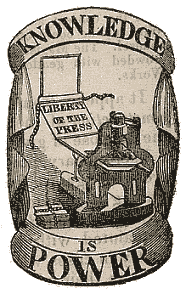



(CNSNews.com) - The House health-care reform bill proposes to decrease hospital visits by establishing a “medical home pilot program” for elderly and disabled Americans.Is this part of Obama's grandiose schemes?
Such a medical home would not require a physician to be on the staff, and therefore could be run solely by nurse practitioners and physician assistants. Medical homes also would practice “evidence-based” medicine, which advocates only the use of medical treatments that are supported by effectiveness research.
To quote Judie Brown "The current debate over health care is one of those scenarios that might play well in a science-fiction thriller, but must not be allowed to play out on the backs and over the dead bodies of the uninformed. The intent to create a nationalized health-care system appears more and more like a behind-the-scenes project based on government control over who lives and who dies".
In the draft now circulating in the House of Representatives is an alarming concept, but apparently interests only a few of those who should be warning the public about it. The target audience should be those who are approaching age 65 and, of course, those who are elderly and needing care. This target audience is going to become the walking target of Obama’s health-care “reform.”It was not long ago when people like me warned that the culture of death would not be satisfied with abortion, but would push for euthanasia soon. Well, the time is NOW!!
It is time to review the tragedy that beauracratic medicine begets! The following is from an article entitled "IT COULDN'T HAPPEN IN GREAT BRITAIN" PUBLISHED ON THE NET BY NHS BLOG DOCTOR.
• Assessing the priority of care for patients in accident and emergency (A&E) was routinely conducted by unqualified receptionists.
• No all-day, on-call cover by consultants because of shortages meant junior doctors were not adequately supervised.
• The trust had two clinical decision units (CDUs) which staff said were used as dumping grounds to avoid breaching the four-hour target for being treated in A&E
• There were not enough nurses to care properly for emergency patients
• Nurses lacked training
• The shortage of nurses on wards meant call buttons went unanswered…patients were sometimes left for hours in wet or soiled sheets...
• Delays in operations were commonplace
• There was often no experienced surgeon in the hospital after 9pm
• Few patients were given the drug warfarin to help prevent blood clots
• Essential equipment was not always available or working
• The trust board was more concerned with finance, targets and achieving foundation status, with little evidence that poor standards of nursing care were identified or discussed
• The trust was poor at identifying when things went wrong and managing risk
As a result of hospital's "appalling" emergency care, many patients died needlessly! The NHS watchdog has said about 400 more people died at Staffordshire General Hospital between 2005 and 2008 than would be expected, the Healthcare Commission said.Note the words "then would be expected"! If Obama Care is passed all patients "too old" and infirmed will be encouaged to die!
It said there were deficiencies at "virtually every stage" of emergency care and said managers pursued targets at the detriment of patient care.
One of the most damning provisions of the bill being circulated through the House of Representatives and the Senate, includes provisions to designate MEDICAL HOMES!
Provisions for the medical home pilot program are an amendment to the Social Security Act, which governs the administration of Medicare and Medicaid services.
The medical home is an approach to medical practice that “facilitates partnerships” between patients and physicians, according to the proposed bill.
The pilot program targets Medicare beneficiaries who have a high medical “risk score” or who require regular monitoring, advising or treatment. This currently applies to more than 22 million Americans, according to Kaiser Family Foundation statistics.
At least $1.5 billion would be redirected from the Federal Supplementary Medical Insurance Trust Fund to fund the medical homes, “in addition to funds otherwise available,” according to the bill.
The Senate health-care reform bill also includes provisions for medical homes, although to lesser detail than the House bill.
If this portion of the legislation passes through Congress, medical homes will be part of the greater health-care reform experiment known as "the public (health insurance) option."
According to the committee, the provisions for medical homes will make the public option a stronger competitor against private health insurance companies.
“The public health insurance option will be empowered to implement innovative delivery reform initiatives so that it is a nimble purchaser of health care and gets more value for each health care dollar,” the House Committee on Energy and Commerce’s summary says about the bill.
Medical homes are tied to “comparative effectivness research” via something called “evidence-based medicine.”
“It will expand upon the experiments put forth in Medicare and be provided the flexibility to implement value-based purchasing, accountable care organizations, medical homes, and bundled payments. These features will ensure the public option is a leader in efficient delivery of quality care, spurring competition with private plans,” the committee’s summary also said.
A statement by the American College of Emergency Physicians (ACEP) said that the effectiveness of the medical home model should be carefully evaluated before applying the model far and wide.
“There should be more research to demonstrate the benefits and continuing costs associated with implementation of the full (patient-centered medical home) model,” the ACEP statement said.
“Demonstration projects being conducted by the Centers for Medicare & Medicaid Services must be carefully evaluated. There should be proven value in healthcare outcomes for patients and reduced costs to the healthcare system before there is widespread implementation of this model.”
The proposal, meanwhile, specifically allows for facilities to be run by staff who do not possess medical degrees – including nurses and nurse practitioners.
While the House bill being pushed by the president reduces access to cures and specialists, it ensures that seniors are counseled on end-of-life options, including refusing nutrition where state law allows it (pp. 425-446). In Oregon, the state is denying some cancer patients care that could extend their lives and is offering them physician-assisted suicide instead. DO AMERICANS WANT THIS TO SATISFY THE 47 MILLION UNINSURED!!








No comments:
Post a Comment